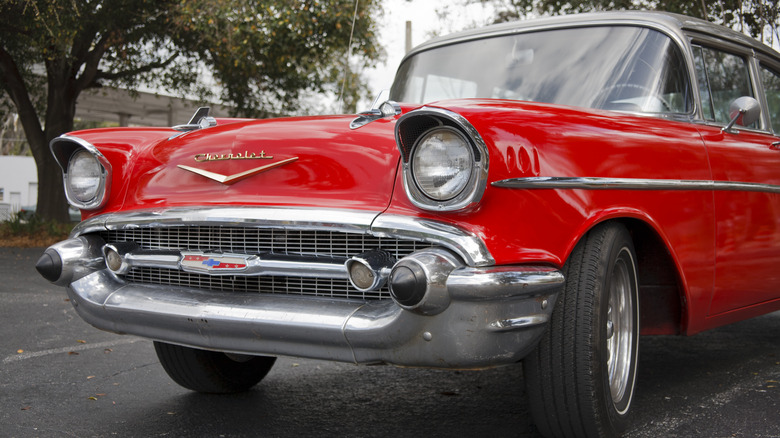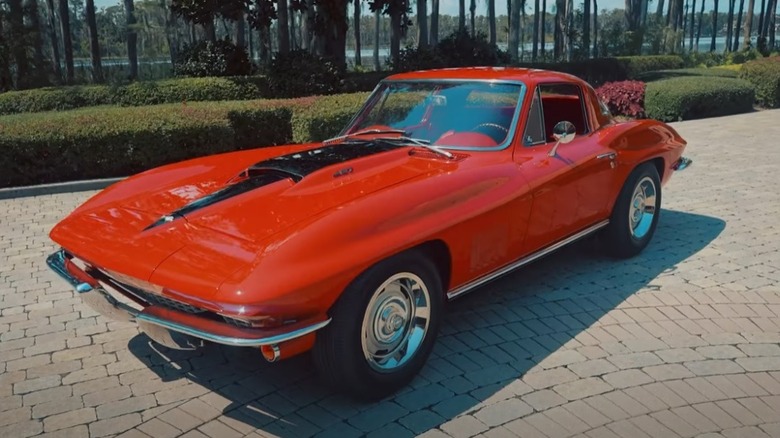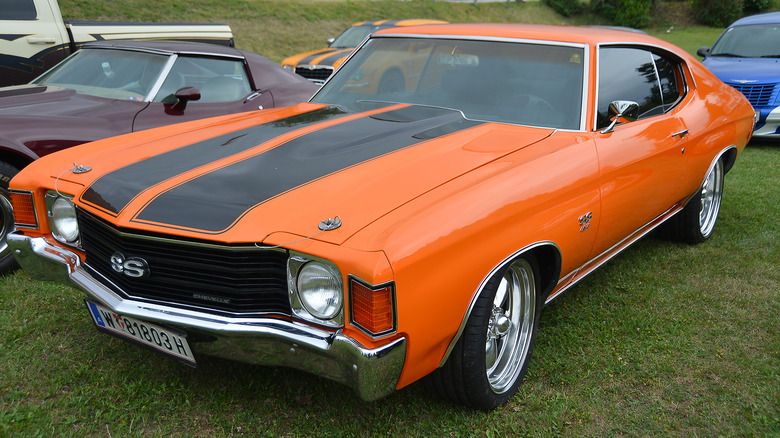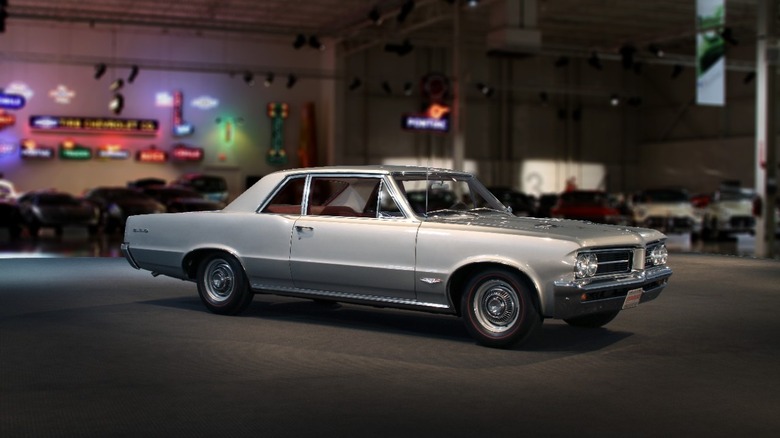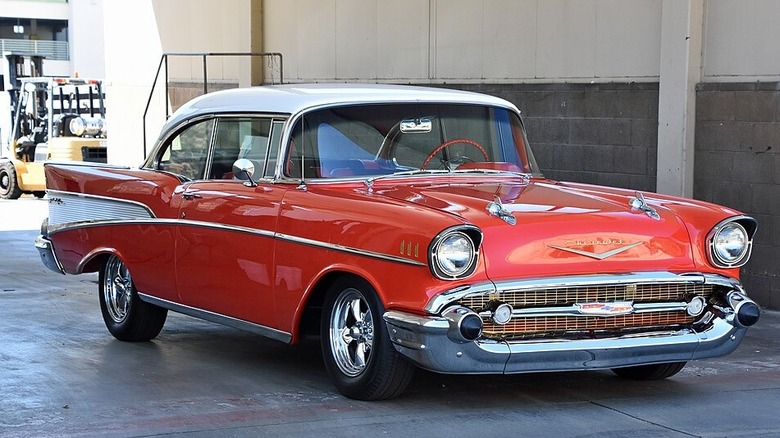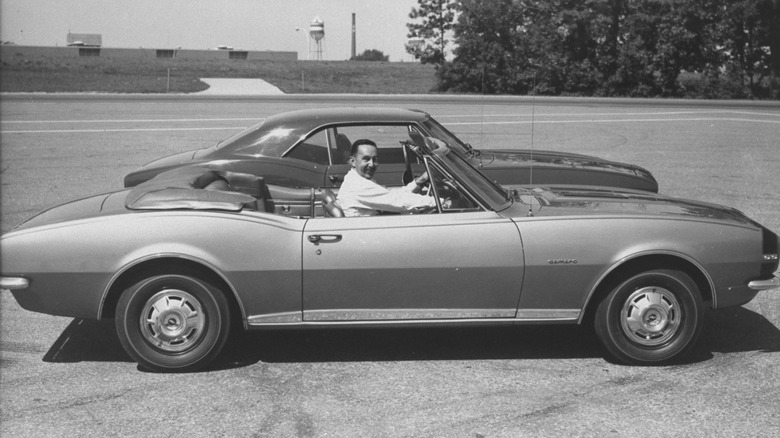5 Classic GM Vehicles, And What They're Worth Today
What makes a car a classic? Nationwide Insurance says that when getting insurance for or registering a "classic car," one typically must be between 20 and 40 years old, while Progressive Insurance claims one can be as "young" as 10. Many states use 25 years as the starting age, except New York and Montana, where it's 30.
Then there's the Classic Car Club of America (CCCA), which stipulates a true "full classic" must have been built (here or abroad) between 1915 and 1948 and possess a "fine" or "distinctive" nature. Say what now? Essentially, it had to be top of the line, expensive to purchase, and built in limited quantities. Any vehicle that rolled off the assembly line in "mass-produced" numbers is not considered a classic.
The point is that no one agrees on the basic meaning of a classic car, and you should see the mental gymnastics required to navigate through classifications like "antique," "collectible," or "vintage" automobiles.
Given the veritable cornucopia of classics under the GM umbrella — Buick, Cadillac, Chevrolet, GMC, Oldsmobile, Pontiac — it's a tall order to come up with just five. The models we have selected are certainly among the most popular, though, so buckle up and curl your fingers around that grab handle as we hop the decades to bring you some lifestyles of the rich and famous level rides down to dilapidated barn finds.
1967 Chevy Corvette L88 Coupe
We're starting with one of the most expensive GM classics ever sold at auction. For reference, a list of the 30 most expensive cars ever sold doesn't include a single GM, Ford, Chrysler, or any other current American automaker. It is, however, littered with foreign-built vehicles, more than half of which came from Ferrari.
A 1967 Chevy Corvette L88S Coupe, considered the "Holy Grail" of all Corvettes today, sold at the 2014 Barrett-Jackson Scottsdale auction for $3.85 million. Two different ragtops sold north of $3 million each, making those Corvette L88 convertibles a big deal, too. While those are all sizable sums, the "least" expensive auto from the list above — a 1964 Ferrari 250 LM — sold for $17,120,268 in June 2023.
The L88 trim was so rare (only 20 were made in '67) that neither the public nor its own salesman knew about it. The MSRP on a coupe was $4,388, while convertibles were $4,240. The L88 "option" was another $1,500 on top of that. The additional 35% got you a coveted Corvette but few amenities, as it lacked a radio, heater, and air conditioning. But those in the know knew that going in.
It did come with a heavy-duty suspension, precision-tuned transmission, hi-lift cam, an 850cfm 4-barrel carburetor, 4.56 positraction, shoulder harnesses, and aluminum heads with 12.5:1 compression. Oh, and GM deliberately underrated its power, listing it at a mere 430 hp. Several third-party dyno tests put it at a mind-boggling 560 hp.
1971 Chevy Chevelle SS
Next is a classic that is attainable for most mere mortals. Three generations of Chevelle ran from 1964 through 1977, with the Super Sport (SS) trim first appearing in 1965. It was such a hit that Chevy gave it its line the following year (1966), lasting until 1973.
Those first-year Chevelles featured a 283 CID V8 producing an anemic (by hot rod standards) 220 hp. But when the Super Sport rolled onto the scene in '65, it was powered by a shiny new L79 350hp V8 and started turning heads. Chevy began dropping big block 396s into the SS in 1966, a move that went a long way in helping it become a legend of the era and one of our Top 10 Coolest Classic Muscle Cars With Big Block Engines.
The problem from a collector's standpoint, Chevy made tons of Chevelles. The SS had smaller quantities (192,000 or about 8% of the total), but that's still "mass-produced," especially by CCCA standards. Oddly, ones made towards the back end of its run (1968-1972) when production numbers were considerably higher tend to hold their value better than the ones made from 1964-1967 because those were the fire-breathers equipped with high-performance packages.
One in "good" condition is worth around $90k, and a Concours model sits around $150,000. Meanwhile, a Concours SS from '71 is much less worthy at just $69,400 and has continued to drop in value over the last few years.
1964 Pontiac GTO
An argument can be made that the first "muscle car" was the Oldsmobile Rocket 88, which first appeared in 1949. Alas, we're going with the other first: The Pontiac GTO. Technically speaking, it's a 1964 Pontiac Tempest LeMans with the upgraded GTO trim (a whole other story unto itself), and it's widely considered the car that kicked off the muscle car craze in the U.S.
The GTO package had a high-performance 389-cu-in V8 that produced 325 hp. Ironically, GM's policy at the time was not to equip cars with engines bigger than 330-cu-in. To circumvent the rule, John DeLorean (head of the Pontiac division at the time) decided to make the more powerful Tri-Power V8 (with 348 hp) available as an option to customers, and the rest is history.
The engine was mated to a heavy-duty 3-speed or close-ratio 4-speed transmission. Extra goodies included unique GTO badging, simulated engine-turned dash panel inserts, and dual hood scoops and exhausts. The 325-hp version of the GTO could scoot from 0 to 60 in 7.7 seconds. In 1964, Pontiac sold 32,450 Tempests with this GTO package at an MSRP of $2,852.
In January 2023, a Concour level '64 Pontiac LeMans GTO was worth $131,000, but that value has slid to $107,000 as of January 2024. According to Classic.com, since March 2019, the average sale price for a '64 GTO sits just under $58,000, with one outlier (a custom recreation) selling for $181,500 at auction in 2023.
1957 Chevy Bel Air
No other car from any era screams "classic" like Chevrolet's 1957 Bel Air. Also known simply as the '57 Chevy, it made our list of 10 Most Iconic Chevrolet Models Ever Built. Like many legends, the Bel Air name first appeared as a trim option for hardtops in the Deluxe model line (from 1950-1952).
It was so popular that Chevy made it into its distinct model in 1953. By '57, the small-block engine from the previous year (at 225 hp) had been increased to 283-cu-in and produced 250 hp. Coupled with two 4-barrel carburetors, a hydraulic camshaft, and a PowerGlide automatic transmission, it became a formidable NASCAR racer.
It was available in a variety of colors and body styles with a dozen different V8 engine sizes (six with the 265s and the other half at 283s). Not only was it affordable and powerful, but the front grille (inspired by the Ferrari) and the cool tailfin rear fenders made it look more like the era's new-fangled jet fighters than another big boxed car rolling down the street.
The original MSRP ranged from $2,290 for the sedan and Hardtop Sport Coupe to $2,611 for the convertible and $2,760 for the Nomad wagon. The average sale price for a '57 Chevy over the last five years at $73,915, with a high sale of $330,000 and a low of $500 (a dilapidated barn find).
[Featured image by Chris Yarzab via Wikimedia Commons | Cropped and scaled | CC BY-SA 2.0]
1967 Chevy Camaro
A list such as this wouldn't be complete without featuring at least one Camaro (which, oddly enough, is a French word that means "comrade" or "pal"). After seeing the incredible sales numbers that Ford's Mustang was achieving, Chevy got to work building something that would directly compete with its main rival.
The Camaro spawned from existing parts and pieces, mainly from the Chevy II and Chevelle models. Those first-year '67s pulled no punches. Base models could be equipped with in-line V6s (230 CID or 250 inline-6 turbo) or four different V8s, ranging from a 275 hp 327 CID to a 375 hp 396.
Those who wanted to go faster and join in on muscle car mania could pick from the Rally Sport (RS), Super Sport (SS), and Z/28 models. Among the many facts of the '67 Chevy Camaro, the Super Sport 350 had a 295 hp 350 CID water-cooled V8 with cast iron block and heads.
The Z/28, with its 290 hp 302 engine, wasn't the most powerful in the lineup but was born (and tuned) to race. It included a cowl induction hood, exhaust headers, and rear spoiler, and because the engine had a shorter stroke, it could rev higher. This powered the Z/28 to wins at the Trans-Am Championships in 1968 and 1969.
Since March 2019, the average sale price of a '67 Camaro has sat around $61,470, which is more than what Hagerty estimates Concours condition '67 is worth (as of January 2024) at $43,600.
